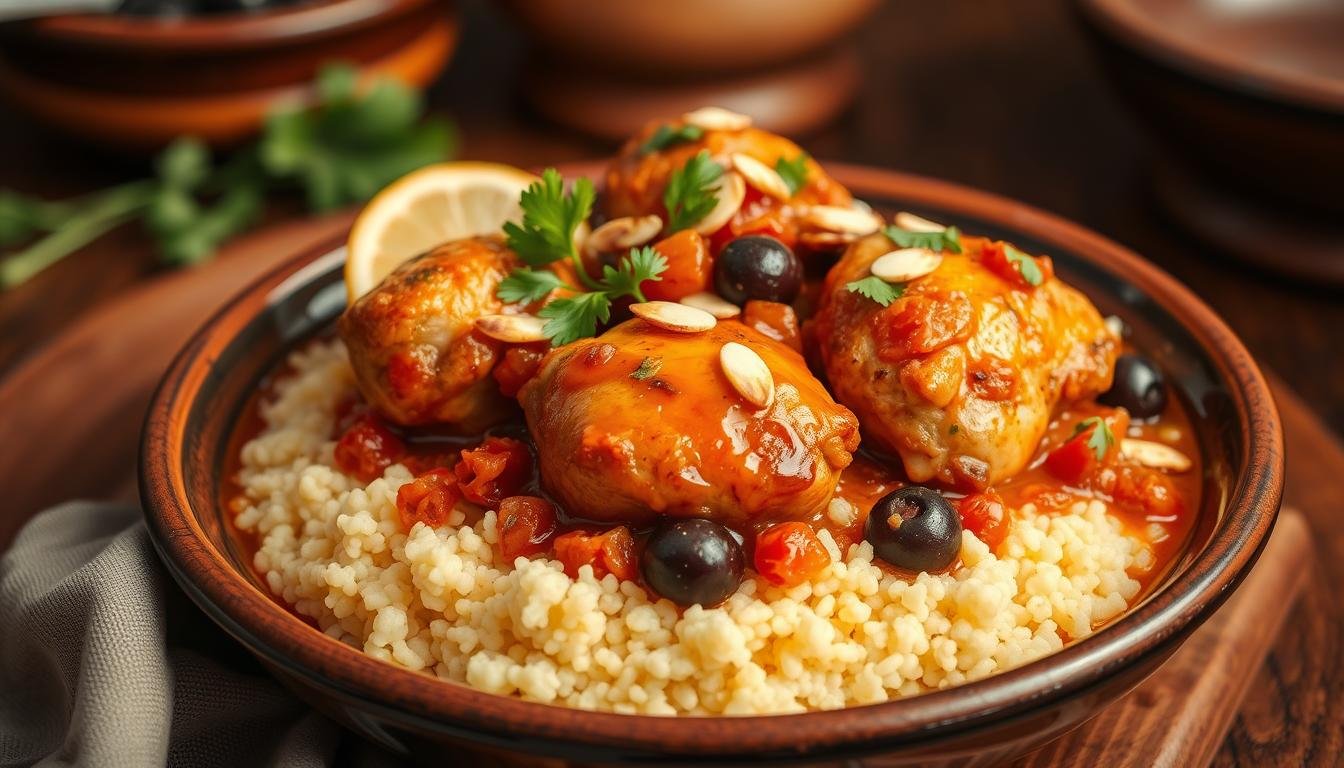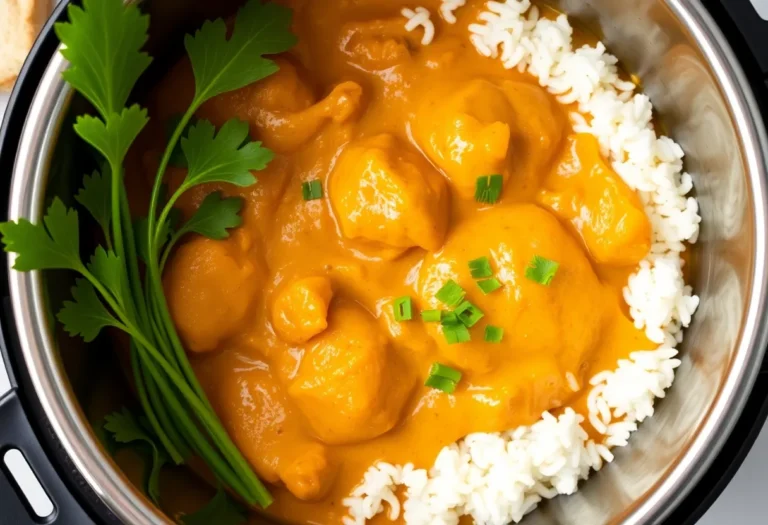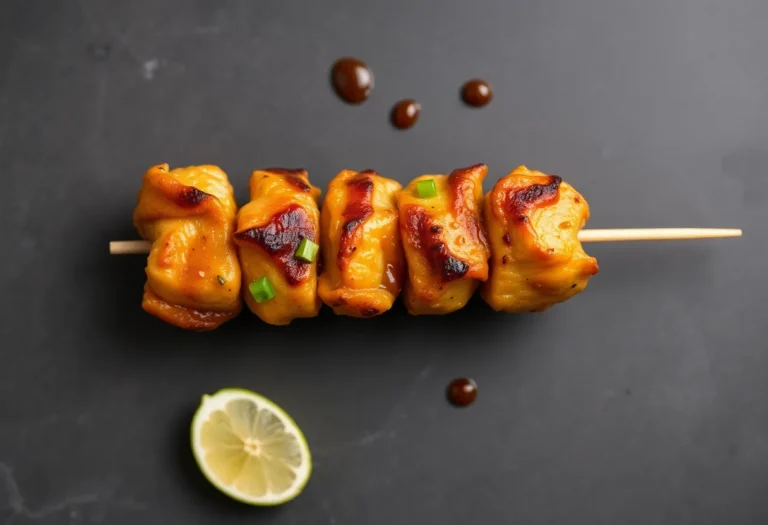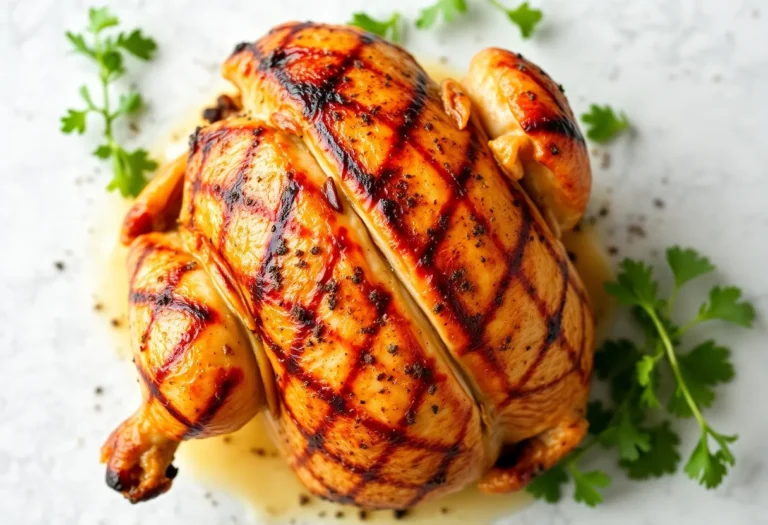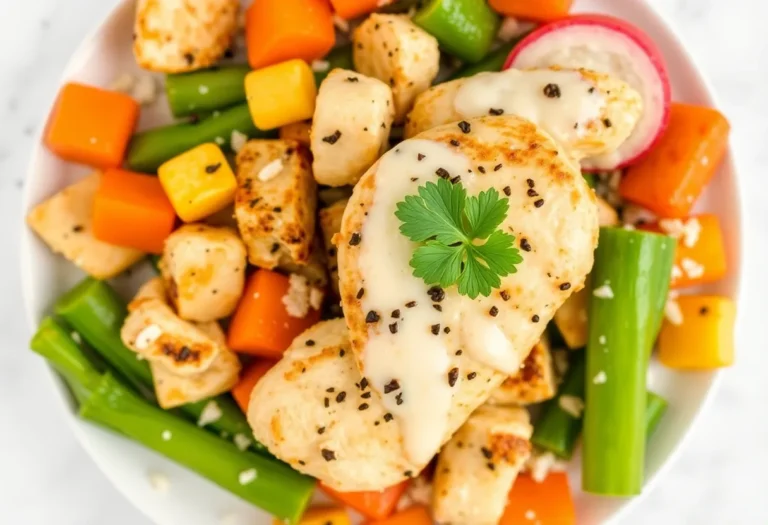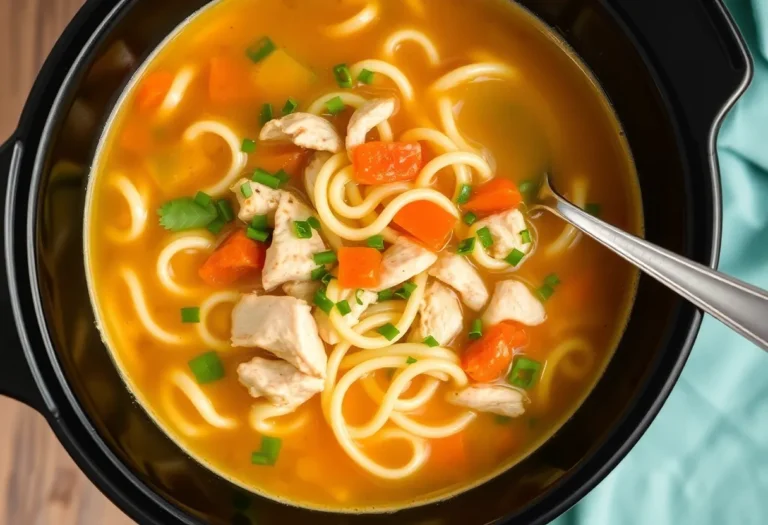Moroccan Chicken Tagine
Ever wondered how a single dish can take you on a journey across continents? Moroccan chicken tagine is more than a meal. It’s a vibrant culinary adventure that brings North African cuisine to life.
This iconic dish combines tender chicken with a mix of spices. It’s both comforting and exotic. Each bite shares stories of generations of cooking, blending herbs and slow-cooked techniques. This makes Moroccan chicken tagine a global favorite.
From Marrakech markets to kitchens worldwide, this dish is at the heart of Moroccan culinary art. Whether you’re an experienced cook or just starting, making an authentic Moroccan chicken tagine is a taste adventure.
Key Takeaways
- Discover the rich cultural heritage behind Moroccan chicken tagine
- Learn about the unique spice combinations that define this dish
- Understand the traditional cooking methods that make tagine special
- Explore how Moroccan cuisine blends complex flavors
- Gain insights into the historical significance of tagine cooking
Quick Recomendation: Our blog is full of useful information to inspire you. If you are seeking a healthy way to prepare your meals, we recommend this Keto product
Understanding the Rich History of Moroccan Tagine Cooking
The Moroccan stew’s story began centuries ago in North African kitchens. It’s more than cooking; it’s a cultural tradition passed down through generations. Exploring Moroccan cuisine starts with learning how this unique technique turned simple ingredients into amazing dishes.
Nomadic Berber tribes first made the iconic tagine pot for desert cooking. Its cone shape allowed for slow, even cooking, saving water and making tough meats tender. Each pot has a story of survival, innovation, and culinary creativity.
Moroccan families have used these clay pots for hundreds of years. They make stews that show the region’s rich farming traditions. The pot’s design helps cook food slowly, keeping flavors and nutrients in. This method is key to Moroccan social gatherings, where meals bring people together.
Today, the Moroccan stew keeps evolving while staying true to its roots. Chefs worldwide celebrate this technique, showing that some traditions never fade. Your love for Moroccan cuisine starts with its deep history.
Essential Ingredients for Moroccan Chicken Tagine
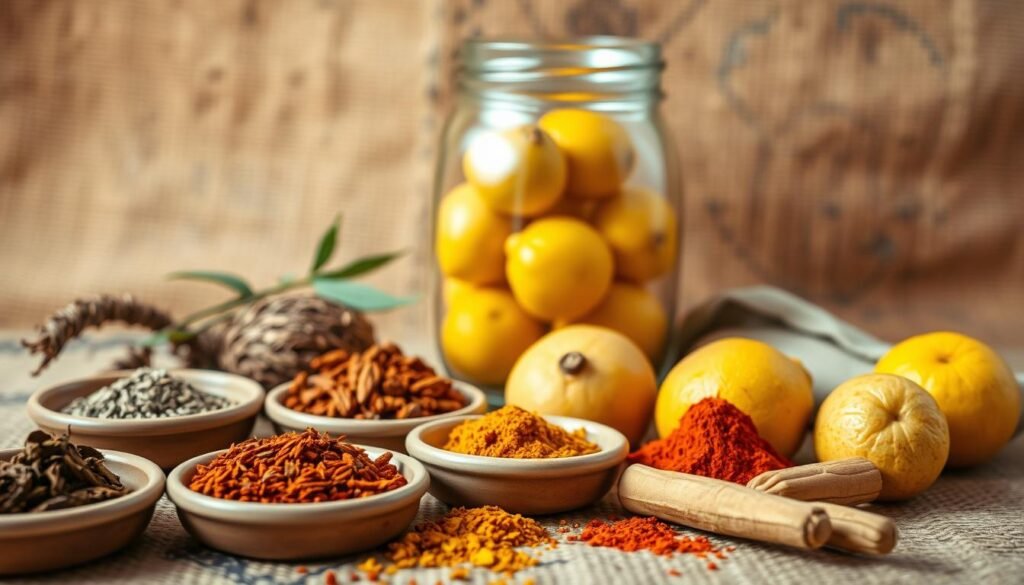
Making a real Moroccan chicken tagine begins with picking the right stuff. The key is the Moroccan spices, which turn simple chicken into a feast for the taste buds.
Preserved lemons are a must-have in any tagine recipe. They’re salt-cured and fermented, giving a strong, tangy taste. When you cut into one, you get a soft, almost candy-like texture that adds a unique flavor to the chicken.
Choosing the right spices is vital for a true Moroccan taste. You’ll need cumin, coriander, paprika, cinnamon, and turmeric. These spices mix to create a warm, aromatic flavor that makes the chicken special. Use fresh, high-quality spices for the best taste.
Don’t forget to pick bone-in, skin-on chicken thighs for your tagine. These cuts stay tender and soak up the spices’ rich flavors perfectly.
The Art of Moroccan Spice Blending
Exploring Moroccan spices is like starting a culinary journey that wakes up your taste buds. North African flavors are known for their rich and lively tastes. Each spice has its own story of tradition and culture.
Creating your own spice blend lets you discover the secret to Moroccan cuisine in your kitchen. Ras el Hanout is the star of Moroccan spices. It’s a mix of up to 12 spices, with each family and region having its own recipe.
Your homemade mix might include cinnamon, cumin, cardamom, and ginger. The trick is to balance these spices to get a flavor that captures North African cooking’s essence.
Begin by toasting whole spices to bring out their oils and flavors. Then, grind them fresh with a spice grinder or mortar and pestle. Try different mixes, tasting as you go. Aim to make a blend that adds depth and complexity to dishes like tagines, couscous, and grilled meats.
Mastering spice blending takes time and practice. Feel free to tweak your mix, adding a bit more of this or that until it’s just right. Moroccan spices can turn simple dishes into amazing culinary experiences.
Choosing and Preparing Your Tagine Pot
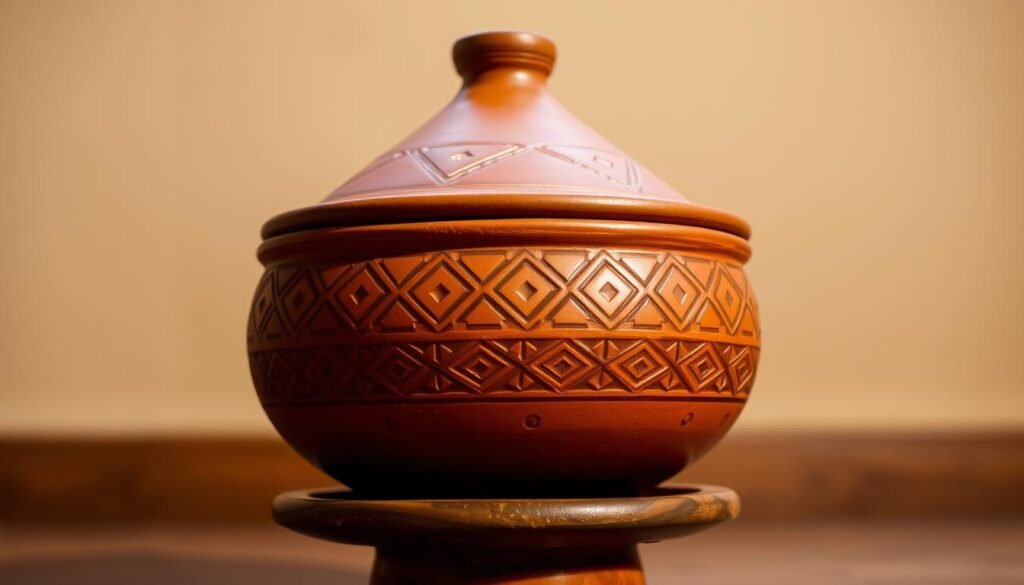
Choosing the right tagine pot is key for authentic Moroccan dishes. These pots come in ceramic, clay, and cast iron. Each type affects how your food tastes and feels.
Think about your cooking style and kitchen when picking a tagine pot. Ceramic pots are great for slow cooking and look beautiful. Cast iron pots hold heat well and are durable for stovetop and oven use.
Seasoning your tagine pot is vital before using it. Soak it in water for hours, then coat with olive oil and bake at a low heat. This prevents cracks and makes it non-stick for Moroccan recipes.
To keep your tagine pot in good shape, wash it by hand with mild soap. Don’t change its temperature suddenly and store it in a cool, dry spot. With care, your tagine pot will be a valuable kitchen tool for making tasty Moroccan meals.
Step-by-Step Guide to Perfect Moroccan Chicken Tagine
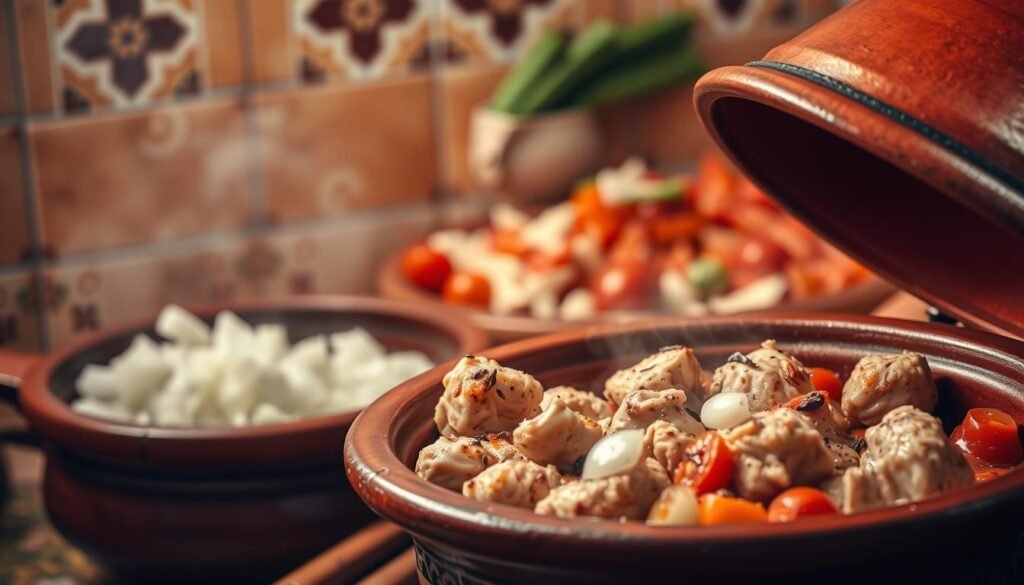
Making a real Moroccan chicken tagine needs patience and skill. First, pick the best chicken pieces for tender results. Then, marinate the chicken in Moroccan spices like cumin, paprika, and saffron for at least two hours. This step adds deep flavors.
Get your tagine pot ready by greasing it with olive oil. Add sliced onions and minced garlic for flavor. Place the marinated chicken on top, making sure it’s spread out evenly. Add more spices between the chicken for extra taste.
The secret to a great slow-cooked chicken tagine is low, steady heat. Cover the pot and cook slowly. This way, the chicken gets tender and soaks up all the spices. Cook for 60-90 minutes, checking it now and then to avoid burning.
Just before finishing, add preserved lemons and green olives for a Moroccan twist. These add a tangy, bright flavor that goes well with the spices. Serve the chicken tagine straight from the pot for a true North African taste experience.
Traditional Accompaniments and Side Dishes
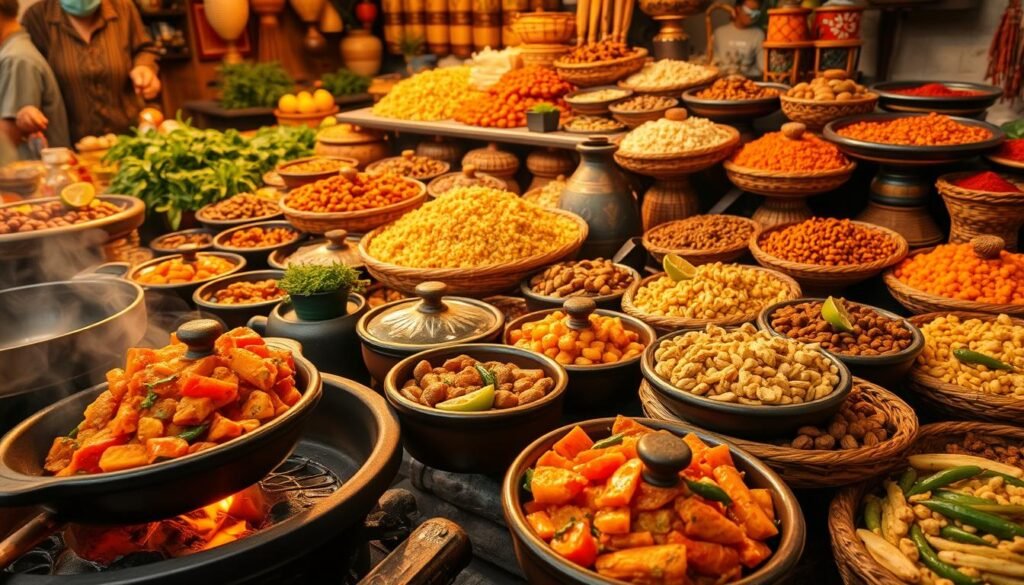
When you make a Moroccan chicken tagine, the right sides make it special. Bread is key, with khobz (traditional round bread) being the favorite. Tear this soft, slightly crusty bread to soak up the tagine sauce.
Couscous is another must-have with your chicken tagine. It’s a tiny steamed semolina grain that’s perfect for your dish. Add a bit of butter and herbs to it, so it matches the tagine’s spices. Moroccan cuisine loves these simple yet tasty sides that make the main dish better.
Vegetable sides add color and health to your meal. Try a Moroccan salad with tomatoes, cucumbers, and onions in olive oil and lemon juice. Roasted vegetable medleys with carrots, zucchini, and bell peppers also add flavor, showing off Morocco’s vibrant tastes.
Don’t forget harissa, a spicy chili paste, for a bit of heat. Serve it on the side, so everyone can adjust the spice. These sides turn a simple chicken tagine into a rich Moroccan food journey.
Tips for Achieving Authentic North African Flavors
Unlocking the true essence of north african flavors is more than just following a recipe. Your Moroccan stew needs a delicate balance of spices and techniques. These transform ordinary ingredients into an extraordinary culinary experience.
Start by understanding the flavor profile of traditional Moroccan cuisine. Use warm spices like cumin, coriander, and cinnamon to create depth. Toasting these spices before adding them to your dish intensifies their aromatic qualities. This brings out a rich, complex taste characteristic of authentic north african flavors.
Dried fruits like apricots or prunes can elevate your Moroccan stew. They add a subtle sweetness that balances the savory elements. This creates a harmonious blend typical of moroccan stew preparations. Nuts such as almonds or pistachios provide texture and an additional layer of flavor. They make your dish truly memorable.
The secret to an authentic tagine lies in slow cooking. Low and slow heat allows spices to meld together. This creates a rich, deeply developed flavor profile. Use a traditional clay tagine pot if possible. It helps distribute heat evenly and infuses your dish with traditional cooking methods.
Remember, authentic north african flavors are about creating a sensory experience. Don’t be afraid to experiment and trust your palate. Each tagine tells a story of tradition, culture, and culinary passion.
Modern Variations of Classic Moroccan Chicken Tagine
The classic Moroccan chicken tagine has seen a big change in modern kitchens. Chefs and home cooks are adding new twists to this traditional dish. They keep its rich heritage but bring in fresh flavors.
Now, vegetarian and vegan tagines are all the rage. Instead of chicken, they use vegetables like cauliflower, eggplant, and chickpeas. These dishes keep the unique spice flavors that Moroccan food is known for.
Fusion cuisine has also taken the spiced chicken tagine to new heights. Chefs mix Moroccan cooking with Asian, Mediterranean, and Latin American flavors. Think of a tagine with Korean gochujang or Brazilian chimichurri sauce.
Modern chefs are trying out new proteins in their tagines. Quinoa, tofu, and even jackfruit are being used instead of meat. This shows that tagine cooking is a flexible art form.
Whether you love traditional dishes or enjoy trying new things, there’s something for you. These modern tagine recipes show how classic dishes can evolve while staying true to their roots.
Make-Ahead and Storage Guidelines
Planning ahead can make your slow-cooked chicken experience better. You can prepare your tagine up to three days in advance. This ensures the flavors develop fully and makes it convenient.
Store your Moroccan stew in airtight containers in the fridge. Keep the protein and vegetables separate from garnishes. This helps keep the texture right.
When reheating, be gentle. Use a covered pot on low heat and add a bit of broth to avoid drying. Stir occasionally to ensure even heating. If you must use the microwave, do it in 30-second intervals, stirring between each.
Freezing is great for this dish. Use freezer-safe containers, leaving space for expansion. Most recipes can be frozen for up to two months. Thaw overnight in the fridge and reheat slowly to keep the flavors rich.
Pro tip: Cool your tagine completely before storing to avoid bacterial growth. Label containers with the date to track freshness. Enjoy your Moroccan culinary creation whenever you want a taste of North Africa.
Conclusion
Your journey through Moroccan cuisine has shown you the joy of Moroccan chicken tagine. It’s more than a meal; it’s a celebration of culture, spices, and cooking traditions. These traditions turn simple ingredients into amazing flavors.
Learning to make Moroccan chicken tagine has taught you about a cooking style that connects families for generations. The slow cooking, clay pot, and special spices make it a true showcase of North African food. Every time you make it, you’re part of a long-standing tradition.
Now you can try new things and make Moroccan chicken tagine your own. You can follow the traditional way or add your own twist. The most important thing is to respect its roots and be adventurous. Cooking is an art, and your dish can show your creativity and love for culture.
Keep exploring Moroccan cooking and see each meal as a chance to learn, taste, and connect with a rich heritage. This heritage inspires food lovers everywhere.
Quick Recomendation: Our blog is full of useful information to inspire you. If you are seeking a healthy way to prepare your meals, we recommend this Keto product
